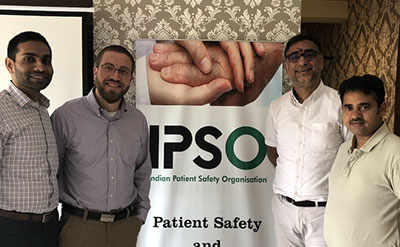“Are We There Yet?” Answering the C-Suite on Improvement Initiatives
With a crunch on the number of resources available for healthcare improvement and a growing list of performance goals, every healthcare organization’s senior leadership team is asking more questions about how their improvement dollars are being used and which are bearing fruitful returns for the organization.
Successful safety and quality executives in this time of heightened awareness on patient safety, quality, and patient experience will be those who can answer their senior leaders’ questions confidently with real data. Frontline leaders, quality and safety managers, and clinical directors can all do their part to give unit-specific or system-wide progress updates on improvement initiatives to senior leaders when asked.
But how can you do it? With the proper organization and tools that give transparency into improvement initiatives, you can be prepared to answer the tough questions.
Next time you are asked these critical questions from senior leaders, how will you answer?
3 Common Questions the C-Suite Will Ask — and How to Be Prepared to Answer
1. “Who is working on (initiative)?”
After defining which goals and initiatives to prioritize in the improvement plan, leaders will naturally want to know who is responsible for achieving each goal. A clear, documented hierarchy is key to assigning accountability and ultimately ensuring goals are not forgotten.
Document the clinical and leadership teams needed to achieve each goal and alert all individuals of their responsibilities, expectations, and deadlines. Teams can be comprised of an entire department, a special committee or task force, or specific job titles.
Another successful strategy is to appoint a team sponsor to ensure ongoing accountability amongst the team, monitor progress, and act as a natural liaison between improvement teams and senior leaders.
A well-defined team structure will lead to more clarity up and down the chain from the frontline to the boardroom.
2. “How are we doing on (initiative)?”
Senior leaders are looking for direct input and feedback from frontline staff to know how improvement efforts are impacting the organization at the patient level. To do this efficiently, managers need a central data repository that can be kept up-to-date to provide frontline visibility to the C-suite for monitoring improvement progress and measuring efficacy along the way.
With one central platform for tracking improvement plans, healthcare organizations can confidently connect actions with outcomes. Having improvement data at their fingertips allows senior leaders to engage in meaningful, data-driven conversations — often for the first time — to better tie improvement initiatives to organizational goals and values.
These insights are critical to decision making, action planning, course correcting, and conserving improvement resources.
3. “Why was (initiative) so successful?”
Healthcare improvement is only considered a success if leaders can identify why the initiative worked so they can replicate that success for future improvement initiatives. What was the team structure that led to success? What actions led to success? What barriers were encountered and overcome? What resources were needed?
Improvement leaders should also be prepared to answer the similar, yet more intimidating question, “Why did (initiative) fail?”
Senior leaders can understand and forgive failures, as long as there are insights and teachable moments that can help the organization avoid similar fates in the future through early intervention and better up-front planning.
The importance of organization, progress tracking, and data-driven communication come to light at this stage when organizations can understand why they succeeded — and why they failed — to replicate successes and avoid future mistakes.
Make Continuous Healthcare Improvement a Reality
Engaging in a well-organized action plan, continually tracking progress, and providing insights to all stakeholders will lead to near-immediate improvements. As soon as one initiative is proven successful, the efforts will snowball and lead to systematic improvements.
Changing the way you track and measure healthcare improvement will have a lasting impact on your organization, patients, and employees.
Want to see what a system-wide healthcare improvement platform looks like? Sign up for a 30-minute demo with our improvement experts.



